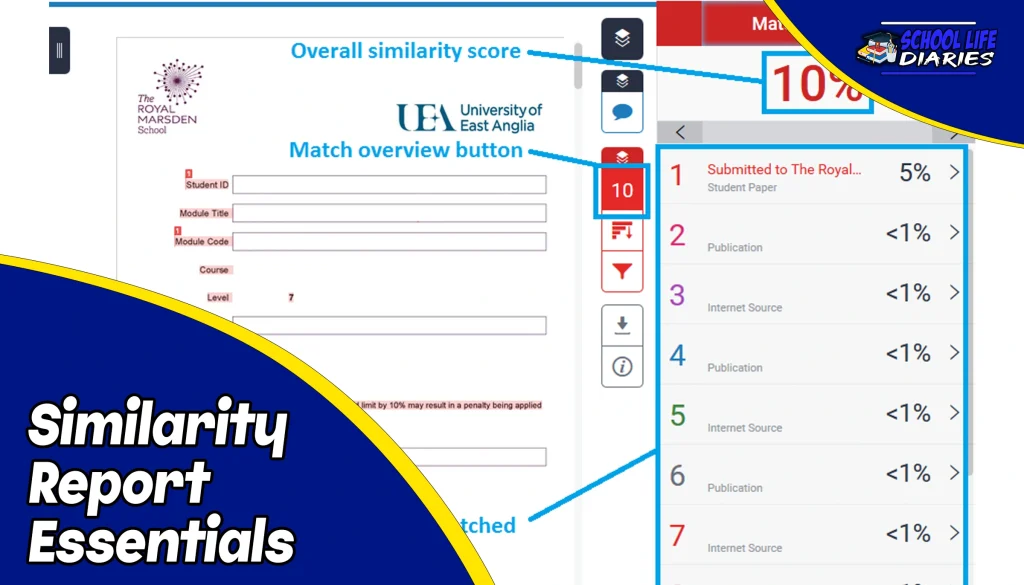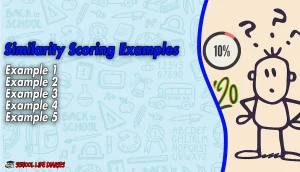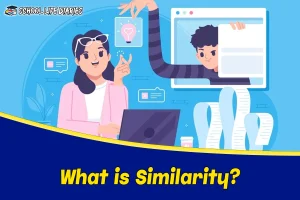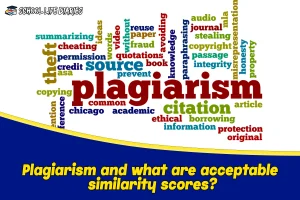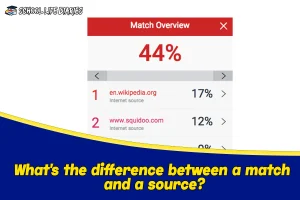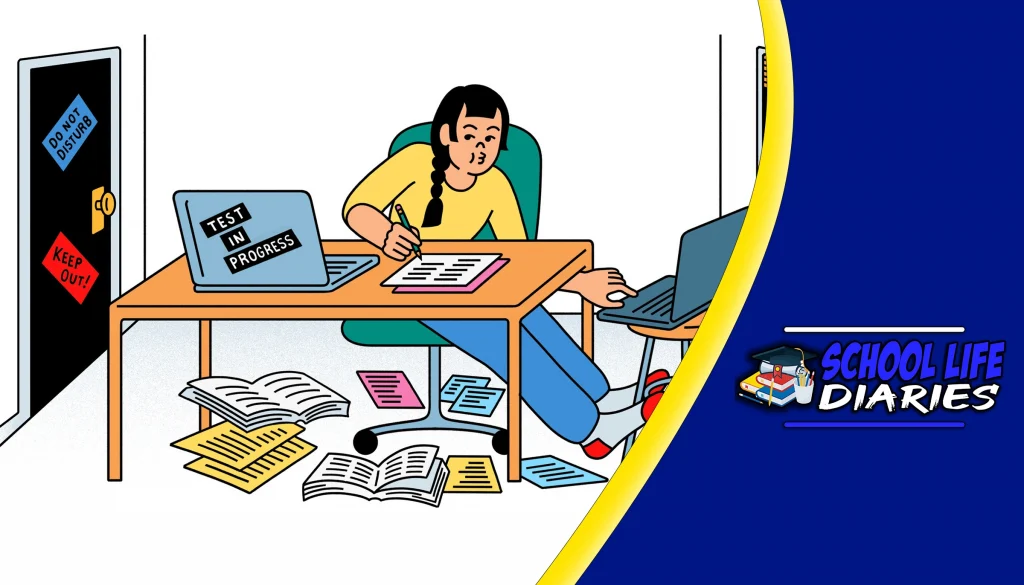Understanding the Similarity Report is crucial for students, educators, and researchers who seek to uphold academic integrity and ensure in their work. This report provides a comprehensive analysis of the text submitted, highlighting any similarities with existing sources in the vast Turnitin database. Through a deeper understanding of this report’s mechanics, individuals gain valuable knowledge that empowers them to produce authentic and original content while respecting intellectual property rights.
The Similarity Report uses an advanced algorithm that compares the submitted document against billions of web pages, previously submitted works, and published materials. It then generates a similarity score that indicates the percentage of matching or similar content found in the document. Researchers benefit from this report by ensuring their work contributes unique insights to their field of study.
Similarity Scoring Examples
This paragraph discusses five examples of similarity scoring using the H2 algorithm.
In Example 1: the similarity report shows a high percentage of matching content between two documents, indicating a strong similarity.
Example 2: demonstrates a moderate level of similarity, with some differences in wording and structure.
Example 3: highlights a low level of similarity, suggesting that the documents are largely dissimilar.
Examples 4 and 5: show varying degrees of similarity based on specific sections or phrases within the text.
Example 1:
Examining an example of a similarity report, one can observe the clear organization and systematic analysis of the content without any reference to personal opinions or perspectives. The similarity report provides a comprehensive overview of various aspects related to plagiarism, such as understanding its consequences, techniques to avoid it, and the importance of proper citation.
The report explains how plagiarized work undermines scholarly integrity and hampers intellectual growth. Moreover, it discusses potential repercussions for individuals who engage in plagiarism, including tarnished reputations and legal consequences. By providing concrete guidelines on these techniques, the similarity report equips readers with practical tools to ensure their work remains original and properly credited.
The similarity report encourages writers to diligently cite sources through appropriate referencing styles like APA or MLA. Examining an example of a similarity report reveals its objective nature as it presents discussions on understanding plagiarism consequences, techniques to avoid it, and emphasizing the importance of proper citation without incorporating personal opinions or perspectives.
Example 2:
Example 2 highlights the essential role of academic integrity in fostering intellectual growth and maintaining scholarly credibility. Understanding comparison algorithms is crucial in comprehending the mechanics behind plagiarism detection software. By analyzing different plagiarism detection software, scholars can gain a deeper understanding of how these algorithms work and identify their strengths and limitations.
One key aspect that researchers often explore is the impact of similarity scores on student evaluations. These scores provide valuable insights into the level of originality in students’ work and help educators assess their learning progress. High similarity scores may indicate potential instances of plagiarism or inadequate paraphrasing, prompting instructors to provide guidance on proper citation practices or offer additional resources to enhance students’ research skills.
On the other hand, low similarity scores suggest that students have successfully synthesized information from various sources while maintaining their own voice, showcasing a high level of critical thinking and analytical abilities.
Example 2 demonstrates the significance of academic integrity in promoting intellectual development and upholding scholarly reputation. By delving into topics such as understanding comparison algorithms, analyzing different plagiarism detection software, and examining the impact of similarity scores on student evaluations, researchers can gain valuable insights into ensuring academic honesty and fostering a vibrant intellectual community.
Example 3:
Prominent within the realm of academic integrity, investigating the correlation between citation practices and plagiarism detection software offers valuable insight into promoting scholarly credibility and intellectual growth. Understanding algorithms is a crucial aspect when discussing plagiarism detection software. These algorithms are designed to compare submitted documents with a vast database of existing sources, identifying similarities and potential instances of plagiarism. By comprehending how these algorithms work, educators and researchers can better understand the nuances of similarity reports generated by such software.
Another important idea to consider is the significance of originality in academia. Plagiarism undermines the foundation of scholarly research, which relies on the generation of new ideas and knowledge. When students or researchers fail to properly attribute their sources, they not only compromise their own academic integrity but also hinder the progress of their respective fields.
Delving into discussions about understanding algorithms behind plagiarism detection software, emphasizing the importance of originality in academia, and recognizing the impact of plagiarism on academic integrity contribute to a broader conversation about promoting scholarly credibility and intellectual growth. By engaging with these ideas, institutions can create an atmosphere that encourages ethical behavior while nurturing creativity and independent thinking among students and researchers alike.
Example 4:
Academic integrity is profoundly impacted by the consequences of plagiarism, as it not only compromises the credibility of scholarly research but also stifles innovation and hampers intellectual growth. To maintain academic honesty, institutions employ various comparison methods and similarity detection techniques to identify any instances of plagiarism in student submissions. These methods involve comparing the submitted work with a vast database of existing sources, both online and offline, to determine the level of similarity.
Accurate similarity reporting is crucial in upholding academic standards and ensuring fairness in evaluating students’ work. It allows educators to identify potential cases of plagiarism and take appropriate action accordingly. Moreover, accurate similarity reporting provides an opportunity for students to learn about proper citation practices and understand how to avoid unintentional plagiarism. It encourages them to engage critically with existing literature while fostering their own originality.
Employing effective comparison methods and utilizing advanced similarity detection techniques plays a vital role in maintaining academic integrity. Accurate similarity reporting not only helps institutions combat plagiarism but also fosters a culture of responsible research and writing among students.
Example 5:
An essential aspect of maintaining academic integrity is the implementation of effective comparison methods and advanced similarity detection techniques. Understanding plagiarism, identifying copied content, and preventing academic dishonesty are crucial factors in promoting a culture of originality and intellectual honesty within educational institutions. By comprehensively understanding the concept of plagiarism, students and educators can better appreciate the significance of genuine research and acknowledge the importance of proper citation.
One way to identify copied content is through the use of advanced similarity detection tools. These tools compare submitted work against an extensive database of sources to determine if any portions have been directly or indirectly plagiarized. Through this process, similarities in wording, sentence structure, and ideas can be pinpointed, providing valuable insights into potential instances of academic dishonesty.
What is Similarity?
Impersonal similarity refers to the measurement of resemblance between two or more texts, without considering any subjective factors or personal opinions. Understanding similarity is crucial in various fields such as academia, journalism, and law enforcement. It allows researchers to compare different documents and identify common themes or patterns.
Measuring similarity accurately requires a systematic approach that involves analyzing different aspects of the texts, including their structure, content, and language. To measure similarity accurately, it is important to identify the sources of similarity. These can include shared vocabulary, similar sentence structures, or identical phrases used in both texts.
Technology has played a significant role in improving the accuracy of measuring similarity by providing tools like plagiarism detection software that can scan large databases of documents and identify instances of duplication. Understanding the concept of similarity goes beyond identifying copied content; it also encompasses recognizing common ideas or themes across different texts.
Understanding impersonal similarity is crucial for various fields and disciplines where comparing and evaluating textual information is essential. Accurately measuring similarity involves identifying sources such as shared vocabulary and sentence structures while utilizing technological advancements like plagiarism detection software.
Plagiarism and what are acceptable similarity scores?
Plagiarism is a serious academic offense that undermines the integrity of scholarly work. As we delve deeper into understanding the similarity report, it becomes imperative to discuss the concept of plagiarism and its implications. Plagiarism refers to the act of presenting someone else’s ideas, words, or work as one’s own without proper acknowledgment. It is considered unethical because it fails to give credit where it is due and violates intellectual property rights.
To combat plagiarism effectively, institutions employ various strategies aimed at prevention and detection. Educating students about what constitutes plagiarism and how to properly cite sources is one crucial approach. By fostering a culture of academic honesty and providing guidance on citing sources correctly, students are better equipped to avoid unintentional acts of plagiarism.
The consequences of plagiarizing can be far-reaching for individuals involved in academia or research fields. Aside from damaging their personal reputation and credibility within their community, those found guilty of plagiarism may face professional repercussions such as job loss or difficulties in securing future employment opportunities. Institutions take this offense seriously as well; they may impose disciplinary actions ranging from academic penalties like failing grades or suspension to more severe measures like expulsion depending on the severity of the offense.
What’s the difference between a match and a source?
Differentiating between a match and a source is crucial in evaluating the originality and credibility of scholarly work, provoking a sense of diligence and meticulousness in academic pursuits. In the context of plagiarism detection, a match refers to any section of text that is found to be similar to existing sources. When a match is identified, it indicates that there is some level of similarity between the submitted work and other texts present in the database.
When using plagiarism detection software, understanding similarity scores becomes essential for determining the originality of scholarly work. A similarity score represents the percentage of text within an assignment that matches with external sources. It provides an objective measure for evaluating potential instances of plagiarism. Higher similarity scores may raise concerns about potential unoriginal content or improper citation practices, while lower scores indicate greater originality and proper paraphrasing techniques.
In terms of acceptable similarity scores, there is no universal standard as different institutions and disciplines may have varying expectations. Generally, it is advisable to aim for lower percentages to ensure academic integrity.
Similarity Score Ranges
Plagiarism detection software assigns a similarity score to each matched source, indicating how closely it resembles content from the submitted document. These scores help assess whether there may be instances of plagiarism or collaboration among authors. It is important to note that acceptable score ranges can vary depending on several factors such as academic institutions’ policies or individual assignment requirements.
Understanding these acceptable score ranges is fundamental for students and educators alike when interpreting similarity reports. While there are no universally agreed-upon thresholds for identifying plagiarism, most institutions have guidelines specifying what percentage of similarity should raise concerns. For example, some universities may consider a high percentage of matching content as an indication of potential misconduct, while others might allow higher levels if properly cited and referenced.
In cases where multiple submissions show significant similarities beyond what could be expected through coincidence or common knowledge, it suggests possible collaboration or unauthorized sharing of work. This feature helps educational institutions address issues related to academic integrity and ensure fair evaluation processes. Understanding the concept of matches versus sources provides clarity when analyzing similarity reports generated by plagiarism detection software. Moreover, being aware of acceptable score ranges allows students and educators to interpret results within their specific academic context effectively.
How does Turnitin detect student collusion?
Turnitin employs advanced algorithms and data analysis techniques to identify patterns of significant similarity beyond what can be attributed to coincidence or common knowledge, enabling the detection of potential collusion among students. Collusion refers to a situation where two or more students collaborate inappropriately on an assignment or assessment, either by sharing their work or by actively working together to produce similar content.
This type of dishonest behavior undermines the principles of academic integrity and fairness. To prevent student collusion, institutions, and educators can adopt several strategies. Students need to understand what constitutes acceptable collaboration and what crosses the line into collusion. Educating students about the consequences of collusion is also crucial. By highlighting that such behavior can lead to disciplinary actions, including failing grades or even expulsion from academic programs, students are deterred from engaging in dishonest practices.
Promoting a culture of academic integrity is another effective strategy against student collusion. Institutions can emphasize the importance of originality in assignments and foster an environment where creativity and independent thinking are valued. Encouraging open discussions about ethical conduct through workshops or seminars helps reinforce these principles among students.
Turnitin plays a vital role in detecting potential student collusion through its sophisticated algorithms that analyze patterns of significant similarity. Preventing student collusion requires clear guidelines on collaboration practices, educating students about the consequences they may face if caught colluding, and promoting a culture of academic integrity within educational institutions.
Conclusion
In conclusion, understanding the similarity report is essential for educators and students alike. The report provides information on the similarity between a submitted document and existing sources, allowing for a proper assessment of originality.
Similarity scoring examples demonstrate how Turnitin calculates similarities based on matching text and phrases. It is crucial to comprehend what constitutes plagiarism and acceptable similarity scores in order to maintain academic integrity.
Differentiating between a match and a source is another significant aspect of comprehending the similarity report. While a match refers to any overlap found in the document, a source indicates an external document or webpage from which the content may have been borrowed without appropriate citation. By understanding these distinctions, educators can effectively identify potential cases of plagiarism.

